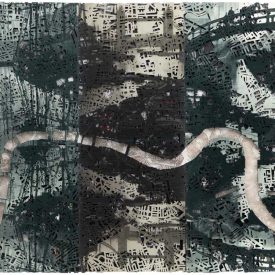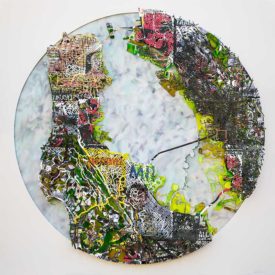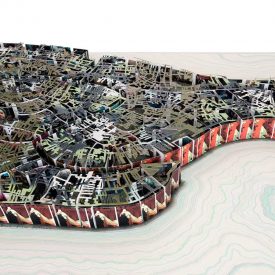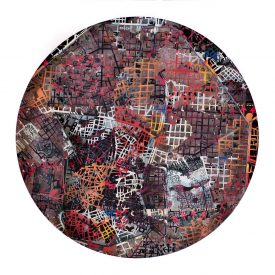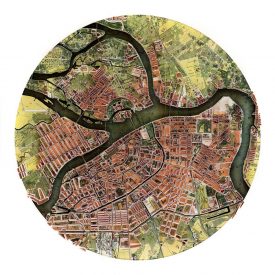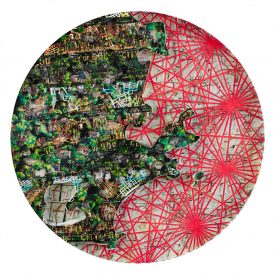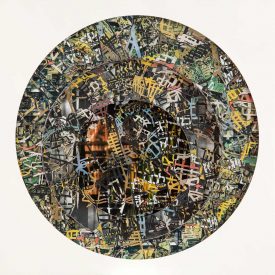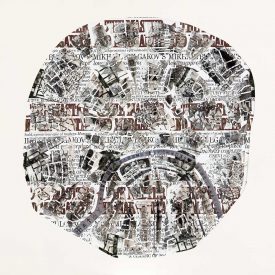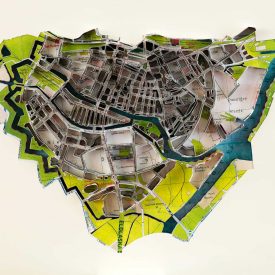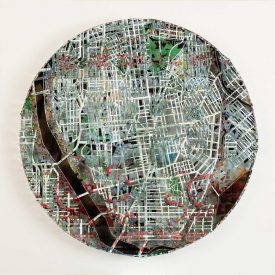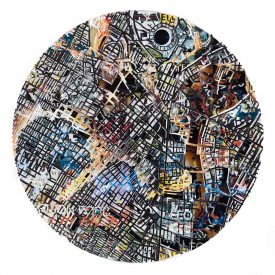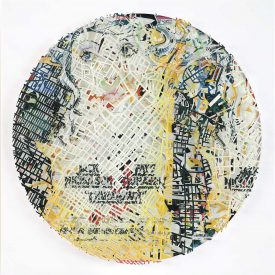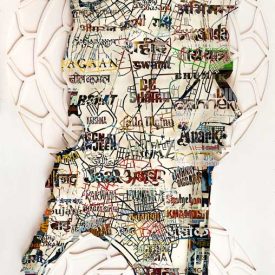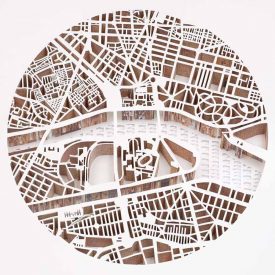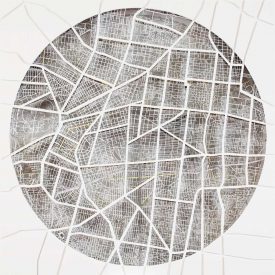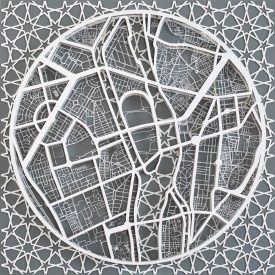“Life is but a game” announces Herman as he is undone by the ghost of the dead Countess, whose vengeance returns in the form of the card The Queen of Spades. This card causes him to lose everything, having bet all he has, he then proceeds to kill himself. Like the novels of Fyodor Dostoevsky, the characters in Tchaikovsky’s opera The Queen of Spades are driven to live and act in an extreme fashion. Gambling recklessly and compulsively, drinking to excess, murdering and committing suicide. They appear to live for the fate of the night in hand, for tomorrow is another day…fate will decide.. Scenes from the opera line the banks of the Neva, above these scenes are sections of the music score.
Murder and its ramifications in the consciousness of the individual is the central theme of Dostoevsky’s Crime and Punishment. Raskolnikov rationalizes the murder of an evil old woman, citing Kepler, /newton, Lycurgus and Napoleon as examples of those who had the right to step over moral boundaries for the sake of a greater idea. Of course the city of St Petersburg itself is essentially founded upon this notion. Peter the Great, forever looms in the background, the entire city of St Petersburg being created by his autocratic will and at the sacrifice of many human lives. The grandeur and splendor always providing a stark and visible reminder of the sheer poverty and squalor of the rundown slums that the majority inhabited. As in the literature of Pushkin, Anna Akhmatova and Joseph Brodsky among others, St Petersburg is a principle actor, the characters and their actions being inseparable from the city. As Leonid Grossman wrote “The squalid and repulsive pictures of Haymarket square and Meshchanskiye streets are offset by the contrasting views of St. Isaac’s cathedral and the embankments, of the palaces and boulevards. The streets and squares, alleyways and canals not only serve as a backdrop to the action, but enter with their outlines in to the thoughts and actions of the heroes. The city constantly dominates the people and hangs over their fates…..the entire structure of a big city of the mid century looms as a heavy and merciless hulk above the dreamer of limitless rights and possibilities of the lone intellect. Petersburg is inseparable from the personal drama of Raskolnikov: it is the fabric on which his cruel dialectic draws its designs.
The sculpture is created from a map of St Petersburg in 1850 and in addition to the music score of The Queen of spades contains excerpted text from Dostoevsky’s “Crime and Punishment” and ’The Gambler”.
